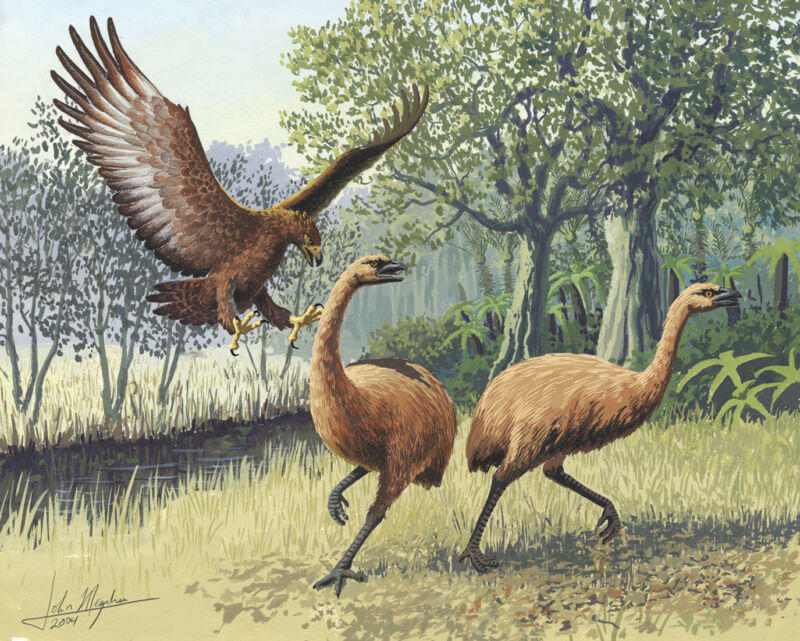How a giant eagle came to dominate ancient New Zealand

Enlarge / The now-extinct Haast's eagle hunting moa in New Zealand, which lacked other large predators. Today scientists are looking at the ancient history of the islands' birds to better understand how natural" biological invasions happen. (credit: John Megahan/CC)
New Zealand has long been known as a place for the birds-quite literally. Before people arrived 700 years ago, the archipelago hosted an idiosyncratic ecosystem, nearly free of mammals. More than 200 bird species filled a food web all their own. Rather than cows or antelopes, there was a family of flightless birds known as moa. And in place of apex predators like tigers, New Zealand had Haast's eagle.
Ever since a group of farm workers drained a swamp in the late 1860s and uncovered its buried bones, this eagle has captivated researchers. Julius Haast, the explorer and geologist who published the first notes on the species, described it as a raptorial bird of enormous dimensions." Today, biologists estimate that the eagles weighed up to 33 pounds-roughly 50 percent more than any raptor known today. But with a wingspan of only two to three meters-just beyond the range of a bald eagle-this was an oddly proportioned bird.
The shape of Haast's eagle was one of many puzzles that scientists faced as they studied this long-extinct species, preserved in just a few skeletons, plus scattered bits and pieces. For nearly a century, there was a debate over whether such a large bird could fly; even after that feud was settled, questions remained about whether the bird was capable of killing moa, which in some cases would have been more than 15 times larger than the eagle itself. Now, new scientific techniques, combined with a clearer understanding of New Zealand's geological history, has placed the Haast's eagle amid a much larger ecological discussion: how species comes to invade" new territories.